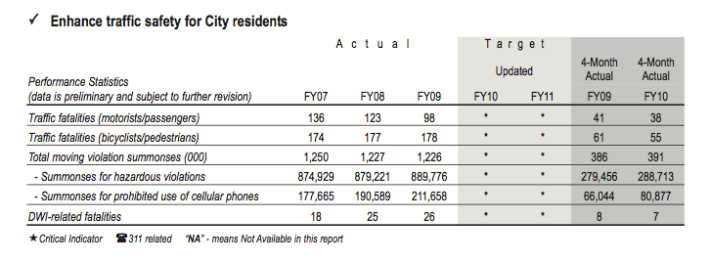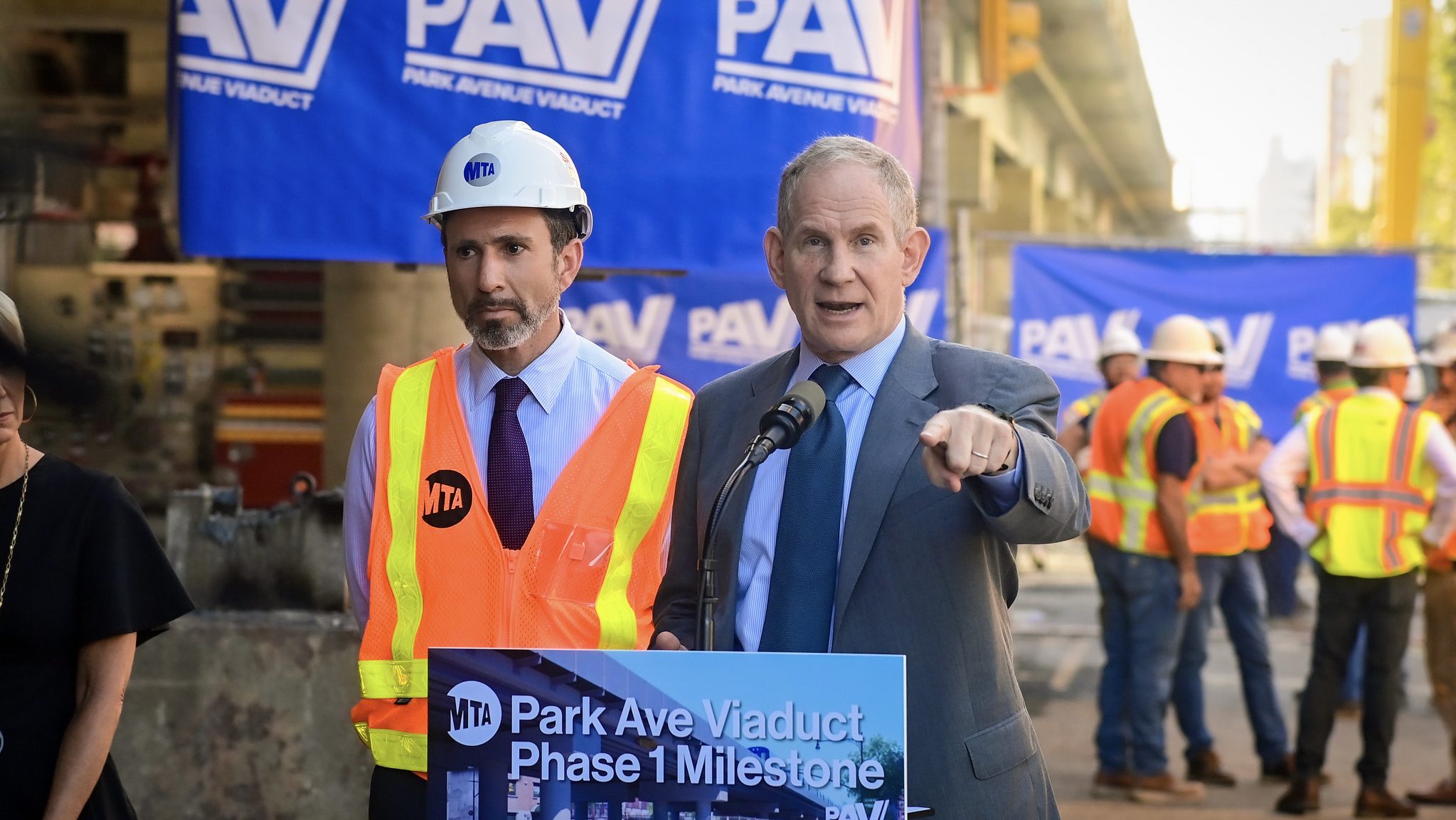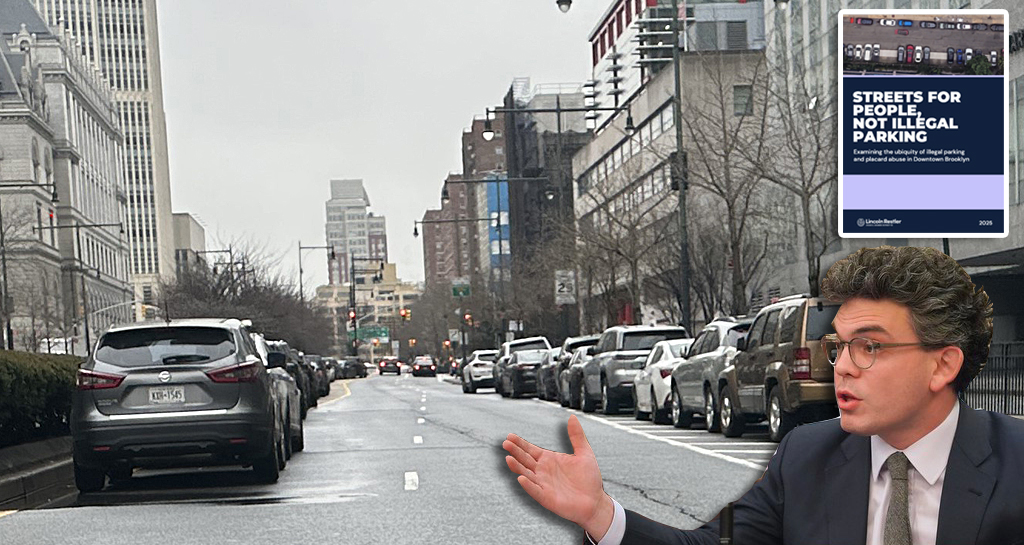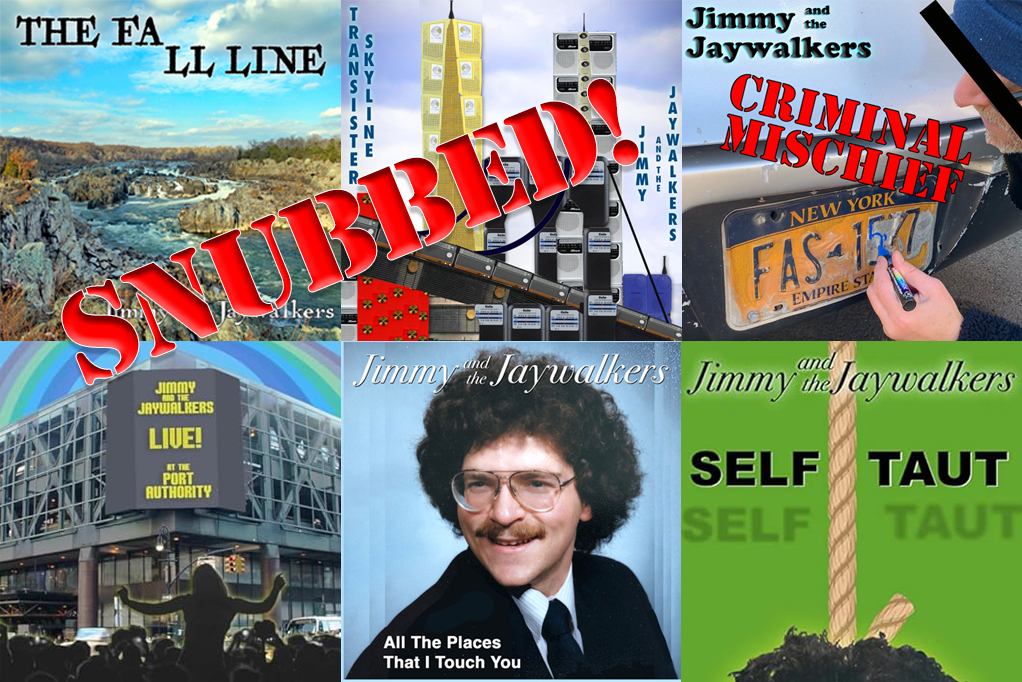
The preliminary version of this year's Mayor's Management Report is out and once again, the NYPD is grading itself on all the wrong things when it comes to street safety. The MMR is supposed to supply the benchmarks and metrics for success that data-driven government depends on. It's released every year, as required by the City Charter, to serve as "a public report card on City services affecting the lives of New Yorkers." But the stats supplied by NYPD offer no insight into how effective its traffic enforcement has been.
To begin with, the police don't attempt to measure the rate of compliance with traffic laws. They simply count how many summonses they hand out. Imagine if Ray Kelly announced tomorrow that the police had caught 100 fewer murder suspects this year compared to last year. Would that be a sign that crime dropped, or that the department was badly failing at its job? There'd be no way to know.
Yet this is exactly how NYPD measures its traffic enforcement effectiveness in the MMR. There is nothing about rates of speeding, failure-to-yield, or red light running. New Yorkers are totally in the dark about the actual outcomes on our streets.
The police stats also obscure important differences between summonses. Cracking down on those who speed or fail to yield might help stop the behaviors that kill pedestrians most frequently, according to DOT's recent pedestrian safety study. Focusing on drivers and passengers not wearing seatbelts, while important, may not have the same impact. Handing out lots of tickets for having tinted windows probably has a weak effect on street safety. But the MMR just puts forward a generalized total number of summons, glossing over important distinctions.
There's one nod to the need to differentiate. The report breaks out "summonses for hazardous violations" from total summonses. But it turns out that almost three-quarters of all summons fall under that category and about one-quarter of those are for cell phone use. Seeing as cell phone use was the cause of exactly one traffic fatality in 2007, according to the Transportation Alternatives report Executive Order, the "hazardous violations" category is almost certainly overbroad.
So what sort of traffic violations are police actually issuing summonses for? Why isn't there more detail in the MMR?
Last week's New York Times scoop, which made a pretty airtight case for the existence of ticket quotas in a Brooklyn precinct, hints at why the NYPD may be reluctant to share details. In that precinct, the Times reported, each shift of officers was told to hand out five tickets each for double-parking, parking at a bus stop, driving without a seatbelt, and driving while using a cellphone. A data-driven approach would look quite different. Instead of setting arbitrary targets for tickets, it would set goals for compliance and use summonses to achieve those targets.
The modern NYPD has made its crime-busting reputation through the use of data-driven programs like Compstat, and the Mayor's Management Report is meant to be a staple of data-driven government. A data-driven police department, however, wouldn't put out the benchmarks that NYPD includes in the MMR, and it wouldn't obstruct a law like Intro 120, which would make traffic safety data open to the public. The city and NYPD need to show they're putting their traffic resources where they save the most lives. Telling us how many summonses they issue just doesn't cut it.





